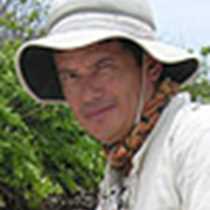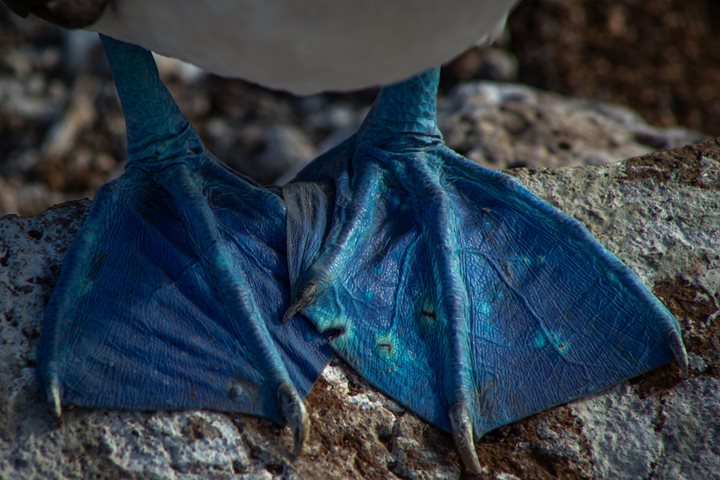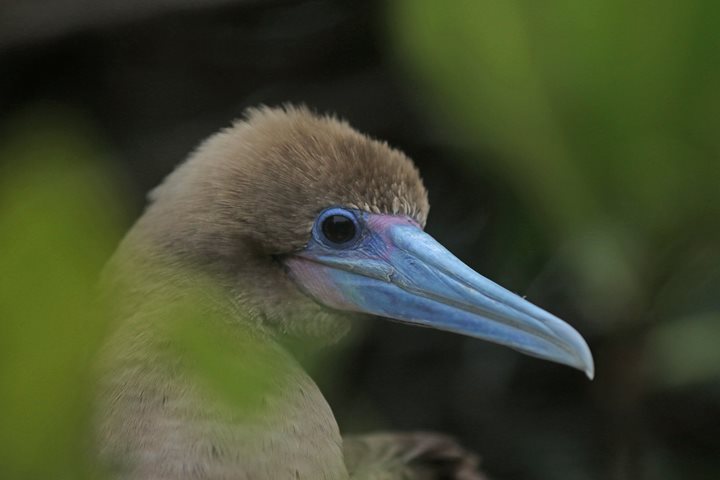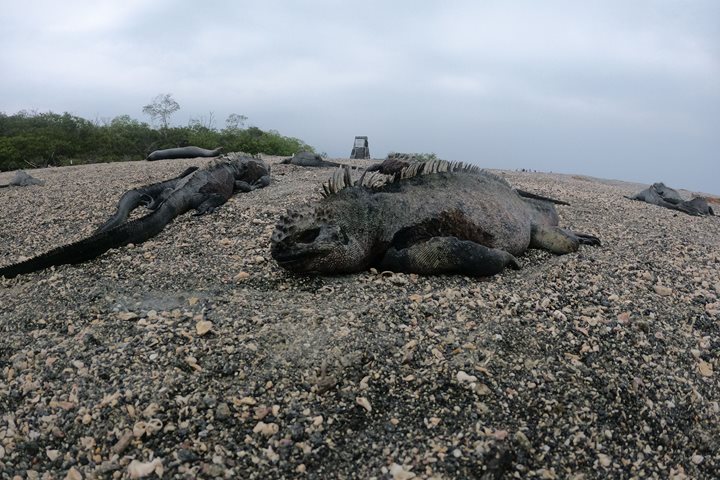Genovesa is a low flat island and is probably the most isolated of the main islands in the Galapagos. But at the same time it’s one of the most special, for different reasons. It doesn’t have any land reptiles, it is home to the largest colony of red-footed boobies, and it was once a very active volcano whose caldera is now an anchorage bay for all visitor ships.
Early in the morning our guests had the opportunity to kayak along the vertical cliffs, discovering exuberant sea life. We observed many red-footed boobies and frigate birds flying with the first beams of sunlight, trying to catch some fish while on the rocks, the Galapagos and fur sea lions slept placidly. After breakfast we landed on the white sand and coral beach, where we were likely to be greeted by lava and swallow-tailed gulls and yellow-crowned night herons. Just behind the beach, a great number of frigate birds and red-footed boobies got our attention with their noisy calls and their undeterred closeness to us. We arrived at the mangroves area where the high tide flooded the beach and were very excited to observe some mullets and damsel fish swimming around of us, while from the rocks lava herons observed them attentively, waiting for an opportunity to catch one of them.
After visiting the beach, we had the chance to come back to the cliffs, but this time to discover an incredible underwater world. Snorkeling was great. We observed many colorful fish such as Moorish idols, streamer hog fish, king angel fish, a huge sting ray, and finally, a big white-tipped reef shark called our attention for its magnificent shape and size.
In the afternoon we headed the Zodiacs to visit the Prince Phillip Steps, which are natural rocky steps and a landing area, which contrasted with the white beach we visited in the morning. Walking inland we could observe a deciduous forest of Palo Santo, whose naked trees hosted a great number of red-footed boobies on their branches. On the flat terrain, Nazca boobies danced or fed their chicks showing us their incredible tameness. But our mission was to observe the elusive short-eared owl so, we accelerated our steps to arrive to the coast line where we observed many storm petrels, frigate birds, and sea gulls flying above of us. We had walked no more than five minutes when we observed the first of the owls. It was hidden on the crevices resting on one leg, the second on the open area camouflaged with the brown rocks and the last one inside a lava tube feeding on a small bird. They were the delight of our guests, who had the opportunity to take a great number of pictures.
It was late. Sea birds began to come back to their nests and along the west, the sunset looked magnificent with an orange ocean and frigate birds at the distance. Our minds always will remember this natural paradise called Galapagos.







